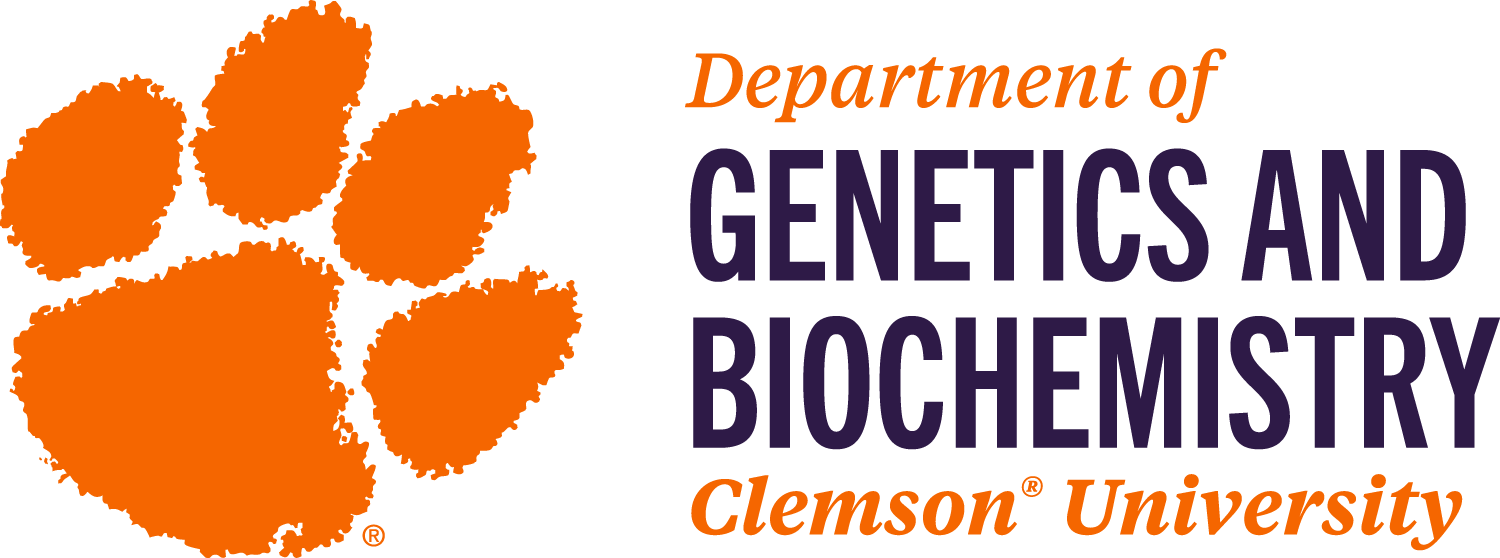Profile

Weiguo Cao
Genetics and Biochemistry
Professor
864-656-4176
Life Sciences Building 240C [Office]
Educational Background
Ph.D., Microbiology, University of Idaho, 1992
BS, Biochemistry, Wuhan University, 1983
Profile/About Me
Our research focuses on understanding the molecular and cellular mechanisms of DNA repair. DNA damage is caused by UV and ionizing radiation, oxidation, alkylation, deamination, and hydrolysis. As a result, DNA bases may be modified and DNA strands may be broken or crosslinked. These changes in DNA structures may hinder normal DNA transactions such as replication or generate mutations due to abnormal base pairing. To prevent genotoxic effects of DNA damage, all living cells are equipped with multitude of DNA repair systems to remove DNA lesions and to maintain genome integrity. Compromise in DNA repair capacity increases mutation and chromosomal abnormality and ultimately leads to disease such as cancer, aging and neurodegeneration.


Deamination is a hydrolytic or oxidative process caused by spontaneous hydrolysis or exposure to nitric oxide, nitrous acid, or N-nitrosoindoles. DNA may be exposed to these nitrosative compounds generated during endogenous cellular metabolism or through environmental sources. Deamination modifies adenine to hypoxanthine (or inosine in DNA), cytosine to uracil, and guanine to xanthine or oxanine. These lesions may cause mutations if left unrepaired (see the diagram below).
Deaminated DNA bases are repaired by two major pathways. Base Excision Repair (BER) is initiated by a DNA glycosylase that removes a damage base from the DNA. Alternative Excision Repair (AER) is initiated by endonuclease V that recognizes deaminated DNA lesions and initiates DNA repair by making a 3' incision to the lesion. Using biochemical, enzyme kinetics, structural biology, genetics and bioinformatics approaches, we are addressing questions related to the molecular recognition mechanisms, protein-DNA interactions, structure and function relationship, functional redundancy and coordination of repair proteins, and evolution of DNA repair.
Research Interests
DNA damage, mutagenesis and repair; structure, function and evolution of repair enzymes; nitrosative stress and cellular response; nucleic acids amplification and detection; protein engineering; human polymorphisms and diseases; small molecular drugs.
Selected Publications
• Jia, Q., Zeng, H., Tu, J., Sun, L., Cao, W. and Xie, W. (2021) Structural insights into an MsmUdgX mutant capable of both crosslinking and uracil excision capability. DNA repair, 97, 103008.
• Peng, Y., Yang, Y., Li, L., Jia, Z., Cao, W. and Alexov, E. (2019) DFMD: Fast and Effective DelPhiForce Steered Molecular Dynamics Approach to Model Ligand Approach Toward a Receptor: Application to Spermine Synthase Enzyme. Front Mol Biosci, 6, 74.
• Sun, Y., Kakinen, A., Zhang, C., Yang, Y., Faridi, A., Davis, T.P., Cao, W., Ke, P.C. and Ding, F. (2019) Amphiphilic surface chemistry of fullerenols is necessary for inhibiting the amyloid aggregation of alpha-synuclein NACore. Nanoscale, 11, 11933-11945.
• Tu, J., Chen, R., Yang, Y., Cao, W. and Xie, W. (2019) Suicide inactivation of the uracil DNA glycosylase UdgX by covalent complex formation. Nat Chem Biol, 15, 615-622.
• Yang, Y., Park, S.H., Alford-Zappala, M., Lee, H.W., Li, J., Cunningham, R.P. and Cao, W. (2019) Role of endonuclease III enzymes in uracil repair. Mutat Res, 813, 20-30.
• Li, J.1, Chen, R. 1, Yang, Y., Zhang, Z. 1, Fang, G.C., Xie, W.* and Cao, W.* (2017) An unconventional family 1 uracil DNA glycosylase in Nitratifractor salsuginis. The FEBS Journal, 284, 4017-4034.
• Li, J.1, Yang, Y., Guevara, J. 1, Wang, L. and Cao, W.* (2017) Identification of a prototypical single-stranded uracil DNA glycosylase from Listeria innocua. DNA Repair, 57, 107-115.
• Xia, B.1, Liu, Y.1, Guevara, J.1, Li, J.1, Jilich, C.2, Yang, Y., Wang, L., Dominy, B.N. and Cao, W.* (2017) Correlated Mutation in the Evolution of Catalysis in Uracil DNA Glycosylase Superfamily. Scientific Reports, 7, 45978.
• Pang, P.1, Yang, Y., Li, J.1, Wang, Z., Cao, W.* and Xie, W.* (2017) SMUG2 DNA glycosylase from Pedobacter heparinus as a new subfamily of the UDG superfamily. The Biochemical Journal, 474, 923-938.
• Yang, Y., Kucukkal, T.G., Li, J.1, Alexov, E.* and Cao, W.* (2016) Binding Analysis of Methyl-CpG Binding Domain of MeCP2 and Rett Syndrome Mutations. ACS chemical biology, 11, 2706-2715.
• Kucukkal, T.G., Yang, Y., Uvarov, O.3, Cao, W. and Alexov, E. (2015) Impact of Rett Syndrome Mutations on MeCP2 MBD Stability. Biochemistry, 54, 6357-6368.
• Lee, D.H., Liu, Y., Lee, H.W., Xia, B., Brice, A.R., Park, S.H., Balduf, H., Dominy, B.N. and Cao, W. (2015) A structural determinant in the uracil DNA glycosylase superfamily for the removal of uracil from adenine/uracil base pairs. Nucleic Acids Res, 43: 1081-1089.
• Li, X., Moses, R. E., Jin, J., Cao, W., and Caulin, C. (2014) Stresses, Aging, and Age-Related Disorders, Oxidative Medicine and Cellular Longevity,2014:320564.
• Kucukkal, T., Yang, Y., Chapman, S.3, Cao, W.3, Alexov, E.3 (2014) Computational and experimental approaches to reveal the effects of single nucleotide polymorphisms with respect to disease diagnostics, International Journal of Molecular Sciences, 15: 9670-9717.
• Xia, B., Liu, Y., Li, W., Brice, A.R., Dominy, B.N., Cao, W., (2014) Specificity and Catalytic Mechanism in Family 5 Uracil DNA Glycosylase, J. Biol. Chem. 289: 18413-18426.
• Cao, W. (2013) Endonuclease V: An Unusual Enzyme for Repair of DNA Deamination, Cellular and Molecular Life Sciences, Invited Review, 70: 3145-3156.
• Mi, R.1, Alford-Zappala, M., Kow, Y. W., Cunningham, R. P., and Cao, W. (2012) Human endonuclease V as a repair enzyme for DNA deamination, Mutation Research 735: 12-18.
• Lee, H. W.1, Dominy, B. N., and Cao, W.3 (2011) A New Family of Deamination Repair Enzymes in the Uracil DNA Glycosylase Superfamily, J Biol Chem, 286: 31282.
(Highlighted in Spotlight, Chemical Research in Toxicology, 24: 1161).
• Li, B.1, Cao, W., Zhou, J., and Luo, F. (2011) Understanding and predicting synthetic lethal genetic interactions in Saccharomyces cerevisiae using domain genetic interactions, BMC Systems Biology, 5: 73.
• Lee, H.-W1., Brice, A. R.1, Wright, C. B.2, Dominy, B. N. and Cao, W.3 (2010). Identification of Escherichia coli MUG as a Robust Xanthine DNA Glycosylase, J Biol Chem, 285: 41483-41490.
• Mi, R.1, Abole, A. K.2 and Cao, W.3 (2011). Dissecting Endonuclease and Exonuclease Activities in Endonuclease V from Thermotoga maritima, Nucleic Acids Res., 39: 536-544.
• Park, S.-H.1, Lee, H.-W.1 and Cao, W.3 (2010). Screening of Nitrosative Stress Resistance Genes in Coxiella burnetii: Involvement of Nucleotide Excision Repair. Microbial Pathogenesis, 49: 323-320.
• Lee, H.-W.1, Hitchcock, T. M. 1, Park, S.-H. 1, Mi, R. 1, Kraft, J. D.2, Luo, J. and Cao, W.3 (2010). Involvement of Thioredoxin Domain-containing 5 in Resistance to Nitrosative Stress. Free Radical Biology & Medicine, 49: 872-880.
• Mi, R.1, Dong, L.1, Kaulgud, T.1, Hackett, K. W.2, Dominy, B. N., and Cao, W.3 (2009) Insights from xanthine and uracil DNA glycosylase activities of bacterial and human SMUG1: switching SMUG1 to UDG, J Mol Biol 385: 761-778.
• Dalhus, B., Arvai, A. S., Rosnes, I., Olsen, O. E., Backe, P. H., Alseth, I., Gao, H.1, Cao, W., Tainer, J. A., and Bjoras, M. (2009) Structures of endonuclease V with DNA reveal initiation of deaminated adenine repair, Nature Struct Mol Biol, 16: 138-143.
(Highlighted in News & Views, Nature Struct Mol Biol, 16: 102-104).
• Dong, L.1, Mi, R.1, Glass, R. A.2, Barry, J. N.2, and Cao, W.3 (2008) Repair of deaminated base damage by Schizosaccharomyces pombe thymine DNA glycosylase, DNA Repair, 7: 1962-1972.
• Dong, L.1, Meira, L. B., Hazra, T. K., Samson. L. D. and Cao, W.3 (2008) Oxanine DNA Glycosylase Activities in Mammalian Systems, DNA Repair, 7: 128-134.

